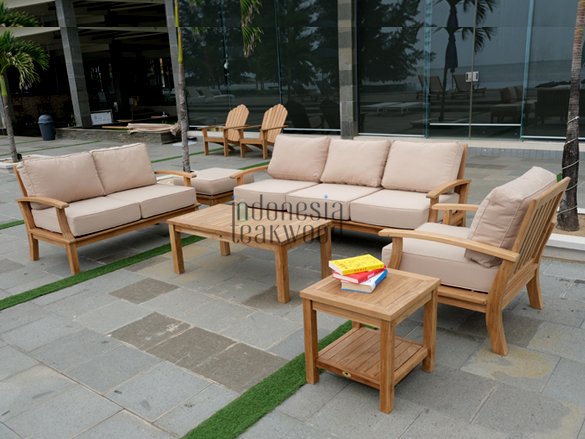Indonesia’s rich cultural heritage finds exquisite expression in the intricate art of traditional carving, a hallmark of classic Indonesia furniture. This time-honored craft, passed down through generations, weaves stories of mythology, spirituality, and cultural identity into every intricately carved piece. Let’s delve into the world of traditional carving, exploring how it continues to inspire and define classic Indonesian furniture.
The Artistry of Wood Carving
Wood carving in Indonesia is an ancient craft that holds deep cultural significance. Skilled artisans, often from families with generations of woodworkers, bring to life intricate patterns and motifs on various furniture pieces. The artistry of carving transforms raw wood into functional masterpieces, creating a visual language that reflects the soul of Indonesia.
Javanese and Balinese Traditions
Indonesia’s diverse regions contribute unique carving traditions to the country’s furniture heritage. Javanese carving is often characterized by its refined elegance, with a focus on symmetry and intricate detailing. Balinese carving, on the other hand, tends to be more spirited and expressive, with carvings that depict scenes from Hindu mythology and traditional dances. These regional influences contribute to the diverse tapestry of Indonesian carving styles.
Mythological Narratives
Traditional carvings in Indonesian furniture often depict mythological narratives and religious symbols. Wayang kulit (shadow puppet) motifs, scenes from the Ramayana and Mahabharata epics, and representations of deities are intricately carved onto surfaces, telling stories that connect the furniture to the cultural wealth of Indonesia. Each carving becomes a visual narrative, inviting users to explore the mythology woven into the very fabric of the furniture.
Flora and Fauna Inspirations
The lush biodiversity of Indonesia serves as inspiration for many traditional carvings. Floral motifs, inspired by the country’s tropical flora, grace the surfaces of cabinets, bed frames, and room dividers. Animal carvings, depicting wildlife native to Indonesia, add a touch of nature’s beauty to the furniture. The artful integration of flora and fauna motifs creates a connection between the furniture and the natural landscapes of the archipelago.
Carving Techniques and Symbolism
Different regions in Indonesia have distinct carving techniques and symbolic meanings associated with their designs. Geometric patterns, spirals, and stylized forms are often used to create intricate carvings. Symbolic motifs, such as the Barong (a mythical lion-like creature) or protective masks, carry cultural meanings that add depth and significance to the carved elements.
Preservation of Heritage
Traditional carving in Indonesian furniture plays a crucial role in preserving the nation’s heritage. As contemporary design trends evolve, the commitment to traditional carving techniques ensures a continuity of cultural identity. Skilled carvers, often working within family workshops, pass down their knowledge to younger generations, ensuring that the artistry of carving remains an integral part of Indonesia’s cultural legacy.
Timeless Elegance of Teak
Teakwood, with its natural durability and distinctive grain patterns, is a favored canvas for traditional carving. The golden glow of teak enhances the elegance of the carvings, creating furniture pieces that stand the test of time. Whether it’s a hand-carved teakwood armoire or a intricately detailed dining table, the marriage of teak and traditional carving produces timeless and enduring classics.
Global Appreciation
The allure of traditional carving extends far beyond the borders of Indonesia. Classic furniture adorned with traditional carvings has found appreciation worldwide, becoming sought-after pieces for those who appreciate the timeless beauty and cultural depth embedded in each intricately carved detail. The global appeal of Indonesian carving speaks to its universality and the enduring charm of classic design.
Conclusion
Traditional carving remains a cornerstone of classic Indonesian furniture, infusing each piece with cultural narratives, artistic expression, and timeless elegance. As the art form continues to inspire contemporary designs, it serves as a bridge between the rich history of Indonesia and the ever-evolving world of furniture craftsmanship. Traditional carving, with its intricate beauty, ensures that classic Indonesian furniture remains a cherished embodiment of the nation’s cultural heritage.


